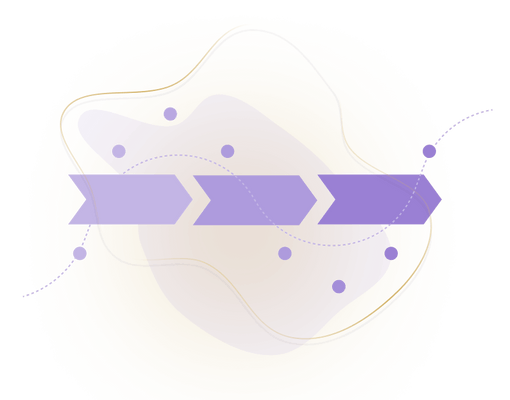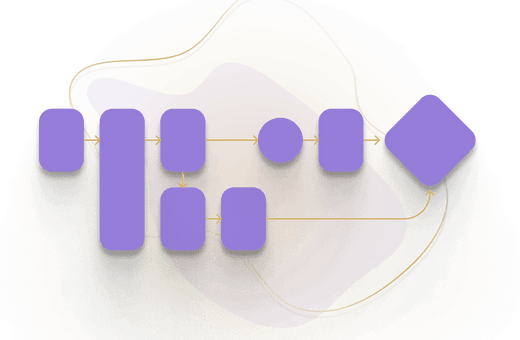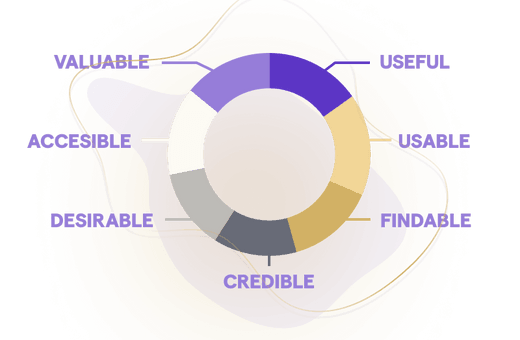Customer Journey Map: A Step-by-Step Guide
Every business wants a happy customer. But why is it so hard to make anything work? The simple answer is that most companies are not selling products; they are selling processes. When you are selling a process, you have to know what the customer is thinking and feeling at every part of their journey. Hence, customer journey mapping.

Customer journey mapping helps companies better understand their customers. Your organization can use a customer journey map to track and map any aspect of a customer's experience: from learning about your product or service through using your support services and even down to unsubscribing from your mailing list.
Companies have been mapping the customer journeys of their products and services for years. The process has brought noticeable benefits to companies who used it, such as better targeting of customer segments and more efficient resource allocation. A company can map out a customer journey in multiple steps: the first is to map out all the actions taken by a single customer; the second step is to create an internal team tasked with each activity within the journey.
Recent research (April 2022) from habitable.co, a Premium CX | UX Design Agency, shows the benefits of understanding the customer's journey with your company:
- The majority of respondents (80%) revealed that they consider their experience with a company to be as important as its products.
- Two in three people say a company's response time determines whether or not they'll return to the business.
What Is a Customer Journey Map?
A customer journey map is a system that outlines the different steps a customer goes through to purchase a product or service. The eight typical stages are:
- Awareness
- Interest
- Consideration
- Evaluation
- Purchase Decision
- Experience
- Loyalty
- Advocacy
Journey maps capture the customer experience from start to finish. As customers interact with you, you can identify what works and doesn't. This allows you to make changes to improve your business.
5 Benefits of Creating a Customer Journey Map
Understanding your customers better will help you tailor the customer experiences to their needs. Also, it allows you to find out what is important to them. This knowledge provides a framework for future CX initiatives.
1. Identify your customers’ pain points and empathize with them
A customer journey map lets you compare customers’ actual experiences to how you had expected them to be. You can then use the information to improve your customer experience and optimize your sales and marketing strategies.
2. Create a unified view of the customer journey
Marketing, sales, and customer service teams often talk about customers in different ways, and this means that customers experience inconsistencies about how and when they're contacted. But if you create a customer journey map, you can create a uniform view of the path buyers take when interacting with your business. With this standard map, all teams can work together to represent your brand.
3. Bridge service or customer experience gaps
You can identify gaps in your buying process by drawing a journey map and then looking for the process. If you notice the website doesn’t have a chatbot or an FAQ section, you’ll know you need to add one.
4. Predict how customers will behave
Map the behavior of prospective buyers as they move through the sales funnel to understand which potential buyers are more likely to convert. Use this information to anticipate their needs and give proactive assistance to customers that are likely to buy products if you provide them with the correct information.
5. Improve your reviews and ratings
Do your customers have to repeat some processes to achieve their goals? Do customers feel lost at any point in the customer journey? You can learn how to improve your reviews and ratings through customer journey mapping by simplifying the customer journey and removing obstacles to order fulfillment and good service outcomes.
Be Aware of the Limitations of Customer Journey Maps
Customer journey maps are not a silver bullet, and there are some limitations to the technique that you should be aware of.
- Don't forget that customers experience your organization as part of a larger group. It's not just about an individual's experience. For instance, in Saas and Finance, how other customers and competitors act affects how a single customer feels.
- A customer journey map represents a single persona's experience, but what about other personas? It’ll take multiple maps to depict the different experiences.
- A customer journey map ignores extreme conditions that can affect behavior. For example, a crisis may compel your customer to request different needs than your standard product or service offerings.
4 Common Mistakes To Avoid When Creating a Customer Journey Map
As you start a customer journey mapping project, keep these four common pitfalls in mind:
- The customer journey map is misused to tell the story of the company's product or service rather than the user's journey. Every company has a story, but it doesn't belong on your map.
- Many companies mistakenly believe that the path followed by a user is linear. Paths through journeys are not always straight lines. Think about the path to purchase a consumer technology product as a series of zigs and zags instead of one straight line from awareness to purchase.
- If a user goes off path, it's easy for companies to draw an arrow pointing them back onto the main trail. However, if users need more help to get back on their journey, you probably should be helping them with more support or a more customized experience.
- Your customer journey map is too focused on how your company helps customers progress through the journey and not focused enough on what they need to do along the way.
6 Steps To Create Your Customer Journey Map
1. Understand your clients
Have conversations with customers to identify the various types of buyers you have and their goals. You'll better understand who they are, what they do, why they do it, and what their needs and wants are. Try creating buyer personas that represent the majority of your clients.
2. Map your customer touchpoints
To identify how your customers interact with your business, you can use web analytics software, social media monitoring software, and other methods, including surveys, polls, and interviews.
3. Match buyer behavior to buyer persona
To make more thoughtful content and design decisions, match actions customers take at different stages of the sales cycle with persona characteristics. For example, a buyer persona that is a problem-solver may opt for self-service support before reaching out to a rep. How to do this: Find appropriate channels for different persona traits. Analyze how many customers use other channels at various points in the sales cycle.
4. Identify pain points and challenge yourself to fix them
For each step in the buying journey, determine where a specific group of customers might struggle. List all the elements that you could change to improve your customer experience. Build out as much as you can on your buyer personas.
For example, customer data may indicate that visitors are not responding to your product pages or that users who receive newsletters don’t respond to them. You may want to spend more time improving your product pages, or you may need to send more targeted emails.
5. Do what will make the biggest difference
Avoid the distractions of doing easy tasks that have no lasting effect on your business. Otherwise, you might end up with a website that looks pretty and loads faster, but people still hate using it. In contrast, imagine if your app could almost instantly get customers a loan with no credit check? This is the type of big-impact improvement you should strive for.
6. Keep your map fresh
If your business doesn't keep up with customer needs and behavior changes, it won't survive. By keeping it fresh, you'll be able to make more informed decisions down the road. Your market landscape will change, too; new product launches, partnerships, and acquisitions will keep you busy!
Let Us Help You Map Your Customer Journey
We've mapped numerous customer journeys and know the pitfalls of digging deep into your organization's silos and data. You don't have to do it alone. Visit Customer Journey Mapping and book a strategy call to start your customer journey mapping.
Get in touch

